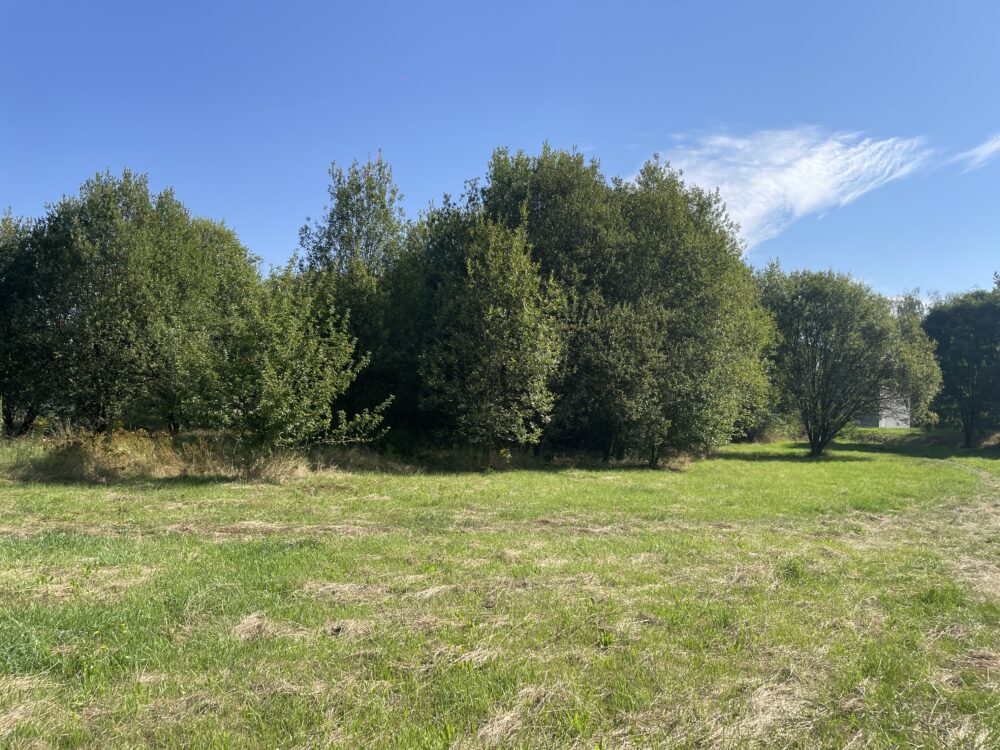Mutual funds
Mutual funds are suitable for beginning investors as well. But how do they work? What are the advantages and disadvantages of investing in mutual funds? And how can you make money when mutual funds also lose money?
 Reading Time: 7 minutes
Reading Time: 7 minutesAlmost everyone looking for healthy personal finances starts by saving, but once they accumulate a substantial sum of cash, they realize that just saving isn’t enough, and they begin to explore investing. Some individuals dive straight into high-risk investments and either make substantial profits or lose everything, while others prefer a more conservative approach. The cautious ones often opt for mutual funds as their first investment experience.
In this approach, as an investor, you buy a share of the fund’s assets (called units), which are managed by investment professionals, economists, and analysts. These experts search for attractive investment opportunities, armed with much more information than an individual investor can gather. Their incentives to run the fund effectively include competing with other funds in terms of performance, growing capital, and attracting new investors (each new investor brings them commissions).
Mutual funds are popular collective investment instruments that enable investors with smaller capital to diversify their investments across several assets, such as stocks, bonds, and real estate. As individuals with smaller sums, achieving this level of diversification would be challenging, and they may struggle to identify which assets to buy.
There are a large number of funds with different strategies to choose from. We’ll look at the basic ones in the article below.
Moreover, the activities of mutual funds are regulated and monitored by the Czech National Bank and an independent depositary, providing investors with a greater sense of security and protection.

It’s not all rosy: there is no such thing as a risk-free investment
The downside of investing in mutual funds is that you lack decision-making power over the allocation of your money across the fund’s investments, and there is no guarantee that the fund will perform well – the amount of yield is unknown in advance. Mutual funds are not subject to the legal protection of bank deposits, so you may lose your investment entirely.
No one can guarantee any yield in advance. During the coronavirus crisis, a significant number of mutual funds experienced losses. Similarly, with the war in Ukraine, the value of many funds fell, resulting in losses for investors, even those with a conservative risk profile. All investments, including mutual funds, carry inherent risks.
However, it is reasonable to expect that in the long run, markets will likely level out again, as they have historically done after previous crises, allowing most investors to eventually turn a profit. Nevertheless, this may take five years or longer. If you need to access your funds within a shorter timeframe, or if the fluctuating curve causes stress due to negative yields, this can be a downside.
Getting your money back from a mutual fund can take up to 30 days after requesting it, and some funds charge withdrawal fees, which should be taken into consideration.
Mutual funds charge various fees, and this is generally seen as a negative aspect. These fees often include an entry fee that can start your investment in the negative.
What do mutual funds trade in?
The most common types of mutual funds are as follows:
- Bond funds: Bonds offer a lower yield but a more stable trend compared to equities.
- Equity funds: Equities are more dynamic and volatile than bonds, resulting in a yield curve that fluctuates positively and negatively.
- Mixed funds: Mixed funds combine stocks, bonds, and other financial instruments in their portfolio, providing diversification.
Besides these, there are other types of mutual funds, such as real estate funds or funds focused on specific sectors. In the past, investing in technology companies was a significant trend, while in recent years, investments in green energy and innovation have gained popularity.

How to choose the right mutual fund?
When selecting a mutual fund, similar to any other investment, you should consider three essential parameters:
- Yield refers to how much the investment will earn. It’s crucial to assess the potential yield on your investment.
- Risk: The level of risk involved determines how much you might lose or gain from the investment. Understanding the risk profile is essential for making an informed decision.
- Liquidity pertains to how quickly and under what conditions you can convert your investment back into cash. Consider your liquidity needs and how easily you can access your money when necessary.
Each mutual fund has a unique investment strategy and is suitable for different types of investors. Open-end mutual funds offer a wide range of combinations of these three parameters, making it possible for everyone to find a suitable fund.
A tip to keep in mind is to be aware of whether the chosen fund is open-ended or closed-ended. An open-end mutual fund is required to redeem your shares upon request, while a closed-end mutual fund does not have such an obligation before a predetermined date. Selling shares in a closed-end mutual fund might be more challenging, and you may need to find another buyer.
Actively Managed Funds vs. Passively Managed ETFs
The performance of actively and passively managed funds can vary over time. Both approaches have their advocates and critics.
- Active Investment Style: In an actively managed fund, the fund manager continuously analyzes the prices and values of individual stocks and buys those deemed interesting. The manager actively makes investment decisions based on their analysis and outlook.
- Passive Funds or ETFs: These funds, also known as exchange-traded products (ETFs), track the market as a whole. They automatically purchase all the stocks in a given index in proportion to their contribution to the overall valuation of the index. Additionally, ETFs are exchange-traded, allowing for easy buying and selling on the market.
Well-known indices used as benchmarks for ETFs include:
- S&P 500: Comprising stocks of the 500 largest companies traded in the U.S., with a significant representation from industrial, energy, or food giants.
- Nasdaq: Consisting of stocks of the 100 largest companies traded on the Nasdaq, which is the world’s third-largest stock exchange, with a substantial share of modern technology companies.
- Nikkei 225: Comprising 225 selected companies traded on the Japanese stock exchange.
- MSCI World (Morgan Stanley Capital International / MSCI AEFE): An index representing the most important stock markets outside North America, with currently 21 countries primarily in Europe, Australia, and the Far East.
Mutual Funds by Riskiness
With mutual funds, you can choose from three ways to invest, with each one evaluating the investment risk and potential gain:
- Conservative funds: The main objective is to protect your money from depreciation in the form of inflation. Yields tend to be low.
- Balanced funds: If you don’t want to take too much risk but also don’t want to fall below the rate of inflation, balanced funds are available. They are slightly riskier than conservative ones but offer up to twice the yield.
- Dynamic funds: They offer the highest possible appreciation of saved funds at the cost of the highest investment risk. The value of these investments tends to fall more often than not and is ideal as a long-term investment. For those with patience, it can yield the highest appreciation.
SECURE YOURSELF FOR FUTURE:
INVEST ONLINE
Mutual funds in the Czech Republic
First of all, it should be said that many foreign funds already operate online in the Czech language or are physically based here. At the same time, most Czech funds are trading on the global market. Which funds are the largest in the Czech Republic?
In fact, every bank operating in the Czech Republic offers its mutual fund, or even the whole group of funds. ČSOB has already exceeded CZK 30 billion with its fund, another giant is AMUNDI associated with Komerční banka. Here too, investors encountered a drop in values last year and this year. The differences in the performance of the funds are marked. For example, in 2020, the most successful fund in the Czech Republic, BNP Paribas Energy Transition, earned investors 173%, while NN (L) Energy generated a loss of -36%. Paradoxically, both funds are, as the name suggests, focused on energy. In 2021, the best-performing fund generated a return of 49.92%, while the worst fell to -20.85%.
Mutual Fund Fees
When investing in mutual funds, you may encounter a wide range of fees:
- Entry fee: Almost every fund charges an entry fee, which is a fee for arranging the investment, typically up to five percent. This fee usually goes to the intermediary through whom you purchase the fund units.
- Exit fee: Some funds also charge a fee for withdrawing your original investment from the mutual fund. However, exit fees are not very common.
- Management fee: This is the most important fee that serves as remuneration for the fund manager. It is usually deducted regularly from the amount of assets invested.
- Performance fee: Not all funds charge this fee, but some do in case of high performance.
- Other fees: Individual fees can vary, both one-off and ongoing, so it’s essential to keep track of the total operating costs.
The fund’s operating expenses are also known as the Total Expense Ratio (TER), representing the total annual cost of the fund.
How quickly can I get my money back from the mutual fund?
Typically, you can have your funds within 30 days after you apply for withdrawal. However, in reality, it usually takes only a few days or weeks to receive your money. Keep in mind that there might be a withdrawal fee, but the conditions vary from fund to fund.
Healthy investing – how much and where to invest?
As mentioned earlier, there is no such thing as a risk-free investment. However, avoiding all risks means gaining nothing. Leaving your savings in a bank account is not the most prudent approach, as inflation erodes their value over time. Investing, on the other hand, allows your savings to work and earn for you.
To start investing wisely, whether in a mutual fund or elsewhere, it’s essential to follow the golden rules of sound investing and management:
- Always keep some savings on hand to handle unexpected events. Typically, having 2 to 3 months’ worth of salary is recommended. Keep a small amount, at least a few thousand Czech crowns, in cash, and put the rest in an interest-bearing savings account at the bank.
- Invest any extra money, preferably in smaller amounts, in several different investment opportunities to diversify and spread the risk.

Is it better to invest in mutual funds or real estate-backed projects?
While mutual funds are the most common, there are other forms of investing suitable for more cautious investors, whether novice or experienced. Many of these alternative investments are much more dynamic, less dinosaur-like: they offer more attractive terms and charge no entry, management, or other fees. Take RONDA INVEST, for example, where you can invest in business loans secured by real estate. Unlike traditional funds, you know in advance the annual yield, which typically ranges from 7% to 9%. This means you can avoid the adrenaline rush that may not be tempting during uncertain times.




